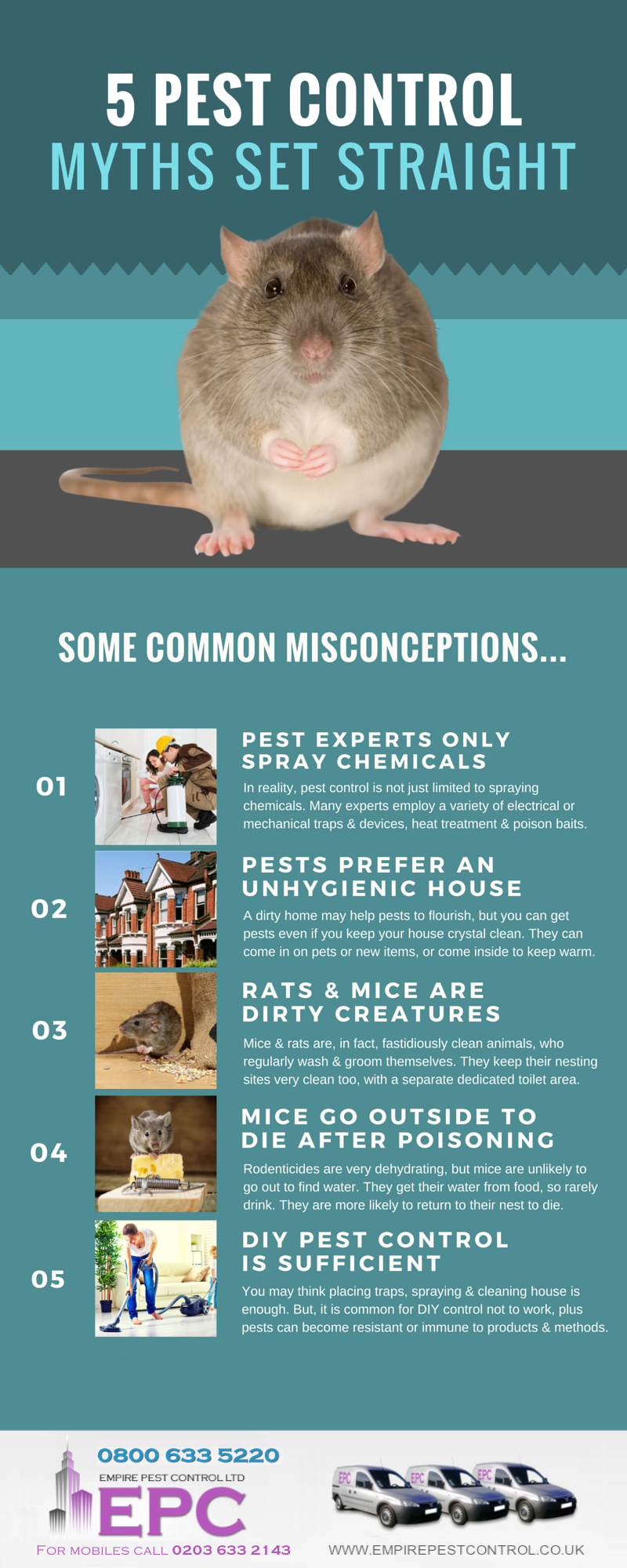Rat Control Understanding Usual Rodent Actions
Rat Control Understanding Usual Rodent Actions
Blog Article
Post Produced By-Wynn Alston
When it comes to rodent control, comprehending common rodent actions is crucial to successfully handling problems. Did you understand that rats have some fascinating nesting behaviors that might shock you? By exploring their complex habits, you can obtain useful insights into exactly how to tackle rodent issues in a more critical and effective manner. So, let's unravel the secrets behind these animals' actions and discover exactly how to outsmart them in your rodent control initiatives.
Rodent Nesting Behaviors
When observing rats in their natural environment, you'll discover that they actively seek out materials to create their nests. Rats, such as mice and rats, are resourceful creatures that make use of a selection of items like branches, leaves, paper, and material to develop their homes. They're thorough in their nest-building process, frequently lining their nests with softer materials like hair or feathers to develop a relaxing environment.
Rats prefer to develop their nests in concealed and protected places to protect themselves and their young from killers. Common nesting places consist of wall cavities, attics, basements, and even within insulation products. By building their nests in these secluded locations, rats can securely elevate their children far from possible threats.
It is important to recognize the nesting habits of rats when carrying out control procedures. By interrupting their nests or getting rid of materials, you can discourage rodents from establishing an existence in your home or home. Correct hygiene and sealing off entrance points are additionally vital steps in protecting against rodent invasions.
Rodent Feeding Patterns
After observing rodents' nesting behaviors, it comes to be obvious that their feeding patterns play an essential role in their daily lives and behaviors. Rats, including computer mice and rats, are opportunistic feeders, indicating they'll eat whatever food source is easily available. They're mainly nocturnal animals, liking to forage for food throughout the cover of evening to prevent predators.
Rodents have a diverse diet, ranging from grains, seeds, fruits, and vegetables to pests, nuts, and also tiny animals. This adaptability in their food choices permits them to flourish in different atmospheres, consisting of metropolitan locations where human food sources are plentiful.
Their feeding patterns aren't just driven by appetite but also by the requirement to accumulate food for times of shortage. This behavior is specifically obvious in preparation for winter season or when nesting. https://www.bobvila.com/articles/how-to-get-rid-of-roof-rats/ are known to hoard food in their nests or burrows, ensuring a continuous food supply. Recognizing their feeding patterns is crucial in carrying out reliable rodent control measures to disrupt their food resources and protect against invasions.
Rodent Activity and Travel
Rodents browse their environments with dexterity and stealth, using their keen detects to relocate promptly through their atmospheres. These animals are proficient climbers, able to scale walls and upright surface areas effortlessly. They can also press through surprisingly little openings, making it critical to seal any type of prospective entrance points in your home.
When visit the following page pertains to traveling, rats have a tendency to comply with acquainted courses, developing tracks along walls or skirting the sides of areas. They're creatures of habit, often sticking to these established courses as they forage for food or discover their surroundings.
Rodents are understood for their nighttime routines, so you may hear them scampering around during the night as they search for food and water. Their motions are quick and erratic, permitting them to dart in and out of sight in the blink of an eye.
Comprehending how rats move and take a trip can assist you determine possible infestation areas in your house and take aggressive steps to prevent these parasites from acquiring a footing.
Final thought
As you work to manage rodents in your home, keep in mind that recognizing their habits is crucial. By identifying their nesting behaviors, feeding patterns, and motion, you can properly prevent problems.
Coincidentally, by taking proactive procedures to remove food resources and seal entry factors, you can interrupt their familiar courses and compel them to look for new areas, inevitably decreasing the chance of rodent visibility in your living spaces.
